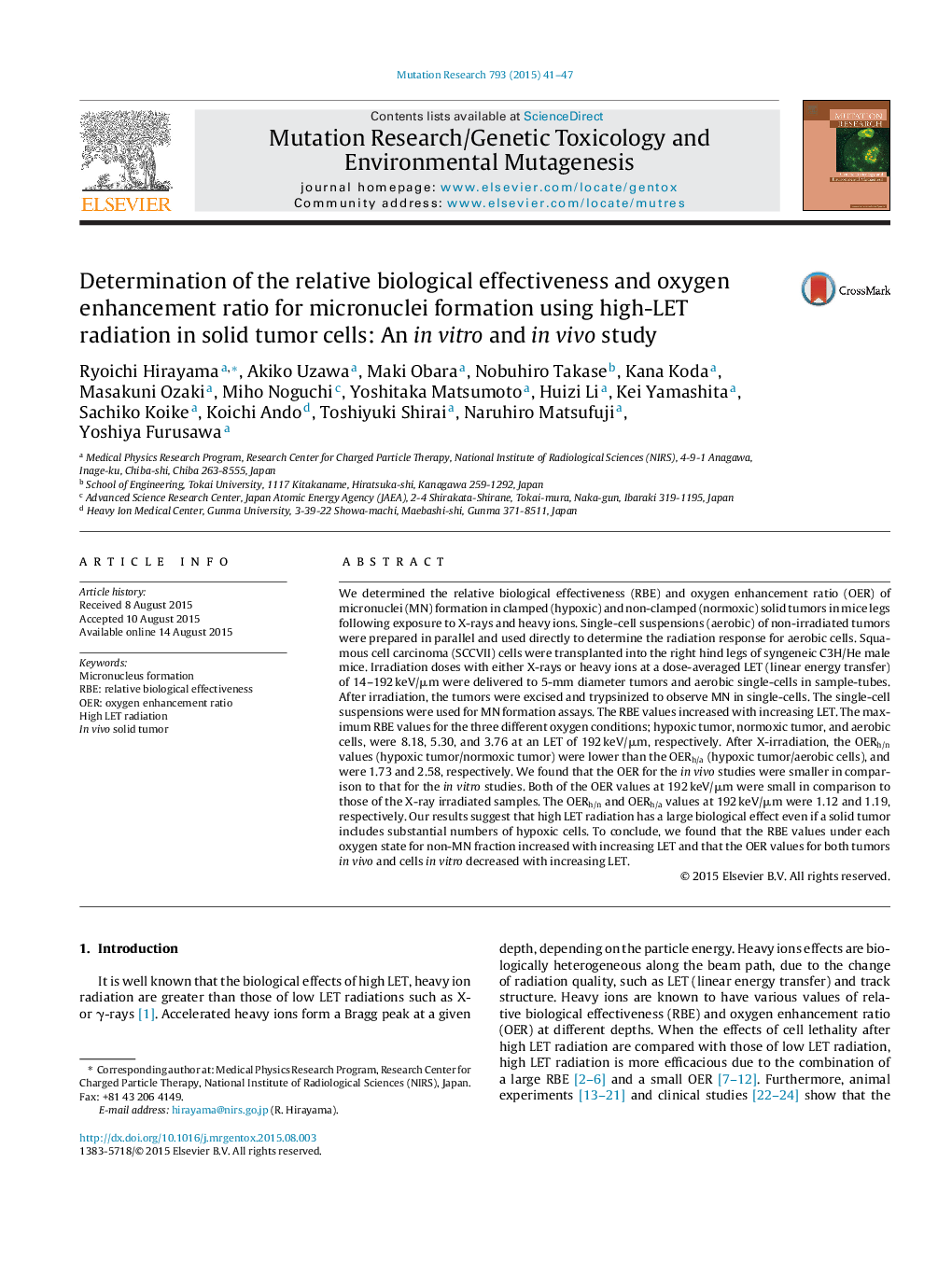| Article ID | Journal | Published Year | Pages | File Type |
|---|---|---|---|---|
| 8456317 | Mutation Research/Genetic Toxicology and Environmental Mutagenesis | 2015 | 7 Pages |
Abstract
We determined the relative biological effectiveness (RBE) and oxygen enhancement ratio (OER) of micronuclei (MN) formation in clamped (hypoxic) and non-clamped (normoxic) solid tumors in mice legs following exposure to X-rays and heavy ions. Single-cell suspensions (aerobic) of non-irradiated tumors were prepared in parallel and used directly to determine the radiation response for aerobic cells. Squamous cell carcinoma (SCCVII) cells were transplanted into the right hind legs of syngeneic C3H/He male mice. Irradiation doses with either X-rays or heavy ions at a dose-averaged LET (linear energy transfer) of 14-192 keV/μm were delivered to 5-mm diameter tumors and aerobic single-cells in sample-tubes. After irradiation, the tumors were excised and trypsinized to observe MN in single-cells. The single-cell suspensions were used for MN formation assays. The RBE values increased with increasing LET. The maximum RBE values for the three different oxygen conditions; hypoxic tumor, normoxic tumor, and aerobic cells, were 8.18, 5.30, and 3.76 at an LET of 192 keV/μm, respectively. After X-irradiation, the OERh/n values (hypoxic tumor/normoxic tumor) were lower than the OERh/a (hypoxic tumor/aerobic cells), and were 1.73 and 2.58, respectively. We found that the OER for the in vivo studies were smaller in comparison to that for the in vitro studies. Both of the OER values at 192 keV/μm were small in comparison to those of the X-ray irradiated samples. The OERh/n and OERh/a values at 192 keV/μm were 1.12 and 1.19, respectively. Our results suggest that high LET radiation has a large biological effect even if a solid tumor includes substantial numbers of hypoxic cells. To conclude, we found that the RBE values under each oxygen state for non-MN fraction increased with increasing LET and that the OER values for both tumors in vivo and cells in vitro decreased with increasing LET.
Related Topics
Life Sciences
Biochemistry, Genetics and Molecular Biology
Cancer Research
Authors
Ryoichi Hirayama, Akiko Uzawa, Maki Obara, Nobuhiro Takase, Kana Koda, Masakuni Ozaki, Miho Noguchi, Yoshitaka Matsumoto, Huizi Li, Kei Yamashita, Sachiko Koike, Koichi Ando, Toshiyuki Shirai, Naruhiro Matsufuji, Yoshiya Furusawa,
